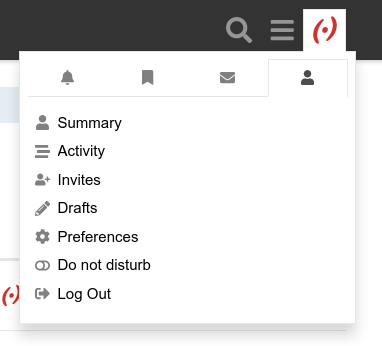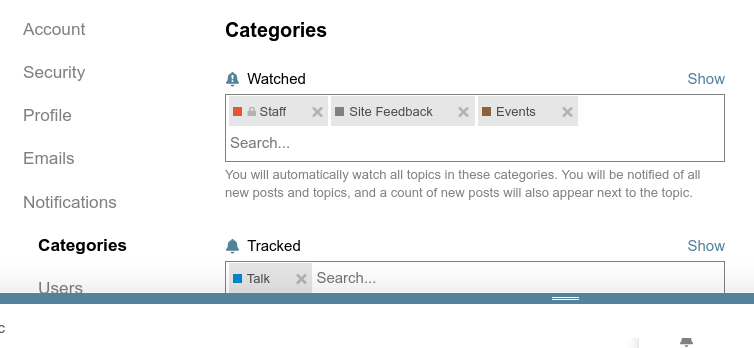This is a short guide to Discourse for people who prefer mailing lists (@anap I’m looking at you).
Discourse may be a Web Forum, it still works very well with email, and with a bit of adaptation you can use it like you would mailing lists. Here we go.
Configure Discourse for Email
In your preferences, you can choose to activate the mailing list mode which will send you email for all topics you follow. Replying to these emails will usually work seamlessly. Sending a new email to a category will create a new topic.
- Find your
preferencesbehind your avatar and user icon:

- In the
Emailsoptions, activate themailing list mode

- Check the notification settings for your wanted categories in the
Categoriestab:

Comparison: Discourse vs. Mailing List
| Mailing List | Discourse |
|---|---|
| Subscribe to a list | Watch a category |
| Create a new thread | Create a new topic |
| Reply to a thread | Reply to a topic |
Subscription → Notification
In Discourse you can modify the notification level of a category. In mailing list mode, f you watch a category, then you will receive all contributions to that category. It is similar to subscribing to a mailing list. In talk, we have three main categories/lists: #welcome (aka #talk, the general list), #tools (the technical list), and #events (the announcement list).
Discourse may be a Web Forum, it still works very well with email, and with a bit of adaptation you can use it like you would mailing lists. Here we go.
Threads → Topics
When you send an email to a list, unless you’re replying to an email you received from the list, it creates a new thread. In Discourse, it creates a new topic. A mailing list is a category, a thread in a mailing list is a topic.
Replies
When you reply to a thread/topic, your response adds a post to the topic, like in a mailing list.
Where to send emails to create topics?
The address welcome at libreho.st will send to the #welcome category, even if you’re not a member. It works as an open mailing list. If your topic needs to be moved to another category, it will, but it will retain its address. Only use this address to create new topics.
Once a topic is created each contribution will generate a unique address so you can reply specifically to a part of the topic. Using the web interface is easier to quote from multiple messages in context.
Emails for #tools and #events are configured similarly with two distinctions: 1) they’re not configured yet in the email system; 2) they would not accept email from non-members. If there is traction to add these emails to the setup, it should be voiced and done.
We started with a simple setup of one email address and one category to keep things simple and mailing-list like.
Why prefer Discourse to Mailing Lists?
Although Discourse mimicks mailing lists and can be used by email almost exclusively (besides settings and preferences), it brings a lot more possibilities than mailing lists, among which:
- a powerful search engine
- the possibility to quote across “mailing lists” (categories), maintaining cross-references
- the possibility to repurpose, recompose contributions and build knowledge (also keeping cross-references)
- powerful editor and markup to integrate external contents via simple URLs (videos, “onebox” links, link previews, etc.)
- wiki and shared posts, published pages, and more advanced features for web publishing
I’d be interested to hear what Discourse does wrong when you’re used to mailing lists.